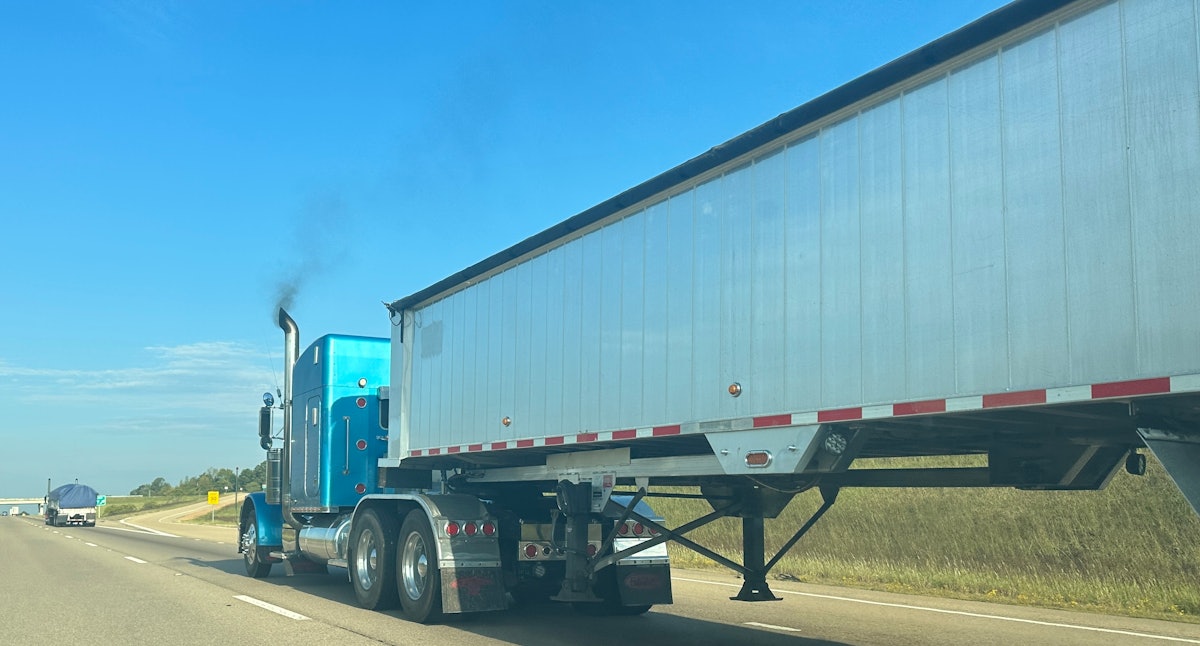
Trucking news and briefs for Thursday, Oct. 17, 2024:
EPA Phase 3 emissions regs under fire in court: Opening brief by challengers filed
A coalition of states, trucking groups, the American Petroleum Institute (API) and others on Wednesday filed its opening brief in a D.C. Circuit Court of Appeals lawsuit challenging the U.S. Environmental Protection Agency’s (EPA) heavy-duty (HD) vehicle emissions standards for model years (MY) 2027-2032.
“Americans overwhelmingly oppose the government telling them what to buy and drive, but this administration’s relentless pursuit of vehicle mandates does just that,” said API Senior Vice President and General Counsel Ryan Meyers. “EPA’s misguided effort to force electrification of America’s trucking industry is contrary to law and threatens to disrupt the nation’s supply chain, leaving consumers in the crosshairs. We are committed to holding the administration accountable in court for these unworkable and unpopular policy mandates that should immediately be rescinded.”
The Owner-Operator Independent Drivers Association, Western States Trucking Association, and others previously joined the states and API as co-petitioners in the lawsuit.
[Related: ‘Not gonna be a guinea pig’: Owner-operators wary of maintenance unknowns with EPA 2027 regs]
Earlier this month, API released polling finding a clear majority of voters across America’s battleground states, including 77% of voters in Michigan and 78% in Pennsylvania, oppose government mandates that restrict consumer choice, including banning new fuel and hybrid vehicles.
In March, the Biden administration finalized new federal emissions standards for heavy-duty vehicles. In the final rule, EPA projects that there would need to be significant deployment of zero-emission vehicles (ZEV) throughout the HD fleet to meet emissions standards.
For example, more 40% of vocational vehicles (work trucks) would need to be ZEVs by MY 2032, API said. Additionally, long-haul tractors (semi-trucks) would need to increase from nearly zero today to 25% ZEV by MY 2032.
[Related: Kamala Harris’ trucking record: ‘Dirty diesel’ regs and how you might get taxed]]
Coalition promotes smartphone feature to deter distracted driving
A coalition whose goal is to bring awareness of the dangers of distracted driving is continuing its effort by bringing attention to a smartphone setting with an awareness day being held today, Oct. 17.
The National Distracted Driving Coalition’s event this year marks the third-annual National Do Not Disturb While Driving Day.
Distracted driving is one of the biggest highway safety challenges in the United States, NDDC said. The National Highway Traffic Safety Administration estimates that distraction is involved in 28.9% of all crashes in the United States. In 2021, it’s estimated that 12,405 people died in crashes involving a distracted driver.
While distracted driving takes on many forms, smartphones are a major contributor. Do Not Disturb While Driving features, which come preinstalled on smartphones under various names, can be set up to automatically silence calls and alerts when a user is driving, helping to limit that distraction and the associated crash risk.
“My son, Mitchel, was killed by a young lady who chose to watch Snapchat instead of watching the road,” said Steve Kiefer, Chairman of the Kiefer Foundation and NDDC steering committee member. “Our message is simple: When you are behind the wheel, put your phone down and just drive. Enabling this feature on your device is easy and will eliminate the temptation of looking at your phone while driving, as notifications will be blocked, and the sender can even receive an automated message indicating that you will respond when it is safe to do so. I promise those notifications will be there when you get where you’re going. If the driver that killed my son had her phone on Do Not Disturb, Mitchel might be here today.”
While different operating systems and devices use different names for the feature, the Do Not Disturb While Driving function is available on all phones and can be set to turn on automatically each time the user gets behind the wheel. Once enabled, the phone relies on sensors and proximity to known Bluetooth connections to determine if the owner is driving and will automatically silence incoming notifications. Some phones also allow users to set automatic replies to inform the person calling or texting that the user is driving and will respond later.
[Related: Look ma, no hands!]
I-10 Corridor Coalition seeks truck parking info
The I-10 Corridor Coalition, a voluntary coalition of state Departments of Transportation, is conducting a survey related to truck parking for commercial vehicle drivers and dispatchers that travel on I-10 in California, Arizona, New Mexico and Texas.
The survey is intended to help the coalition better understand what challenges or issues drivers may face when attempting to park at locations along the corridor.
Drivers who use the I-10 corridor in those states are invited to share their experiences. The input will help with the implementation and operation of an upcoming truck parking availability system (TPAS).
All responses to this survey will be kept strictly confidential and individual responses will not be reported.
The survey can be completed here.
[Related: Truck parking info delivery study points to key limitations — accuracy, accessibility in-cab]
